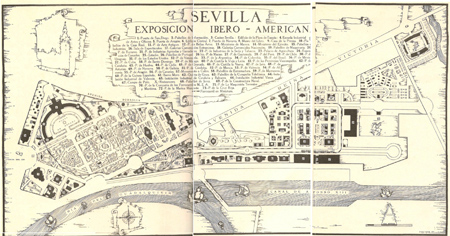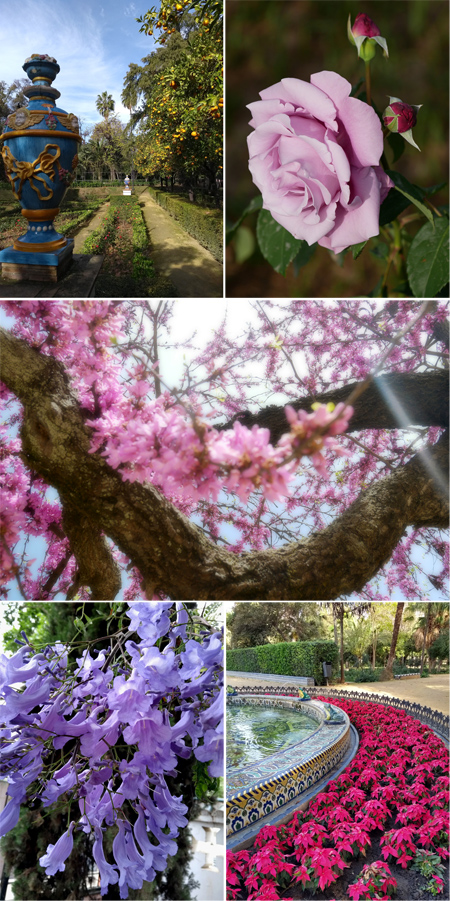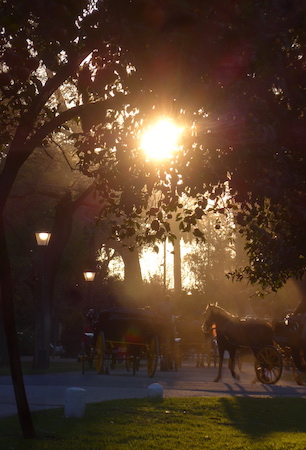
Designed by a French landscape architect for the 1929 Ibero-American Expo, Parque María Luisa was once the backyard of the powerful Montpensier family; in fact, Sevilla named the park after its Duchess donor. Today, this 34-hectare public space remains the largest green area in the city, full of many interesting nooks & crannies to explore. Let’s have a look at its past & present…
Origins
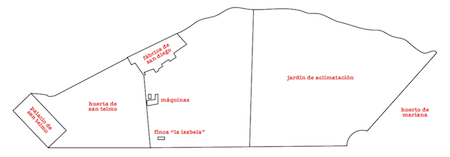
In 1846, Antoine d’Orléans —the youngest son of French king Louis Philippe— married the Infanta María Luisa Fernanda de Borbón —the youngest daughter of Spanish king Fernando VII— in Madrid. The Duke & Duchess of Montpensier immediately took residence in Paris… but only two years later, the abolition of the French monarchy forced them to look for a new home. They chose Sevilla & acquired the Palacio de San Telmo along with the estate “La Isabela“, the former Franciscan convent of San Diego & its garden space as well as large, municipal gardens along the Guadalquivir River. The couple, using their French noble titles while pretending to assume the Spanish throne, set out to convert this new backyard into their family’s private retreat.
Transformation

André Lecolant accompanied the Montpensiers in exile from France, & as Head Gardener oversaw every Spanish land acquisition that the couple made. Local agronomist José Gutiérrez worked alongside Lecolant to plant a large grove of orange trees in one section, while turning the rest into an English-style garden area filled with water features & guided paths:
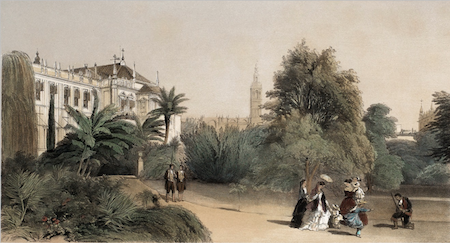
After the death of the Duke of Montpensier in 1890, the city approached the Duchess with an offer to purchase the gardens. Local officials wanted to open direct access from El Prado de San Sebastián to the river, cutting a line straight through the Montpensier’s backyard. To everyone’s surprise, María Luisa Fernanda donated almost half of the gardens “for the pleasure & solace of the residents of Sevilla.” Whatever pretensions to the throne they had, the Duke & Duchess fell in love with Sevilla… evident by the cultural legacy they left behind.
1929 Expo
When money became available for a world expo, city officials hired French landscape architect Jean-Claude Nicolas Forestier in 1911 to redesign Maria Luisa’s donation + the adjacent Huerto de Mariana. Forestier had previously worked on the Bois de Boulogne in Paris & made this space a combo of an English-style formal garden (plants in their “proper” spot, guided paths) & a Moorish garden (private corners, water features reminiscent of the Alhambra). The park opened in 1914 for the April fair & has been a popular gathering spot ever since.
The breathtaking Spain pavilion —sitting in Plaza de España— opens up to a lush, green area with several other structures that survive from the 1929 Expo: a small library with original frescos inside, the Domecq pavilion, Plaza de América with two museums, a Cervantes-themed reading nook & the former royal pavilion. Wide, paved streets allow horse carriages to take people through the park while smaller paths allow for on-foot exploration. Find your favorite bench & enjoy the fresh air!
Later additions
Naturally the park has changed over the past century to accommodate modern tastes. My favorite “new” tile panel can be found in the Glorieta de Luis Montoto, with a fountain designed by sculptor & ceramicist Emilio García Ortiz. Similar geometric, 3-D tiles can be found throughout Sevilla on health care centers, pharmacies & schools built during the late 1950s/early 1960s.
Flora
One of the major attractions of Parque María Luisa are blossoms almost year-round. Roses, jacaranda, Judas trees, jasmine, orange blossoms & dozens more provide a dash of color whenever you visit.
Special moment
If you happen to be visiting Sevilla during Holy Week, don’t miss the only float that crosses through the park. Based in the adjacent neighborhood of El Porvenir, the Hermandad de la Paz has to pass through Parque María Luisa in order to reach the cathedral. Experiencing the procession during the day is wonderful, but seeing it at night with the floodlit backdrop of Plaza de España is something special.
What’s your favorite spot in the park?
Sidenote: If you’d like to learn more about the Montpensier’s many contributions to Sevilla, check out the following PhD thesis written in 2016 by Manuel Rodríguez Díaz that was extremely helpful in writing this post: “El Mecenazgo de los Duques de Montpensier en Andalucía: Arquitectura, Jardines y Coleccionismo.“
